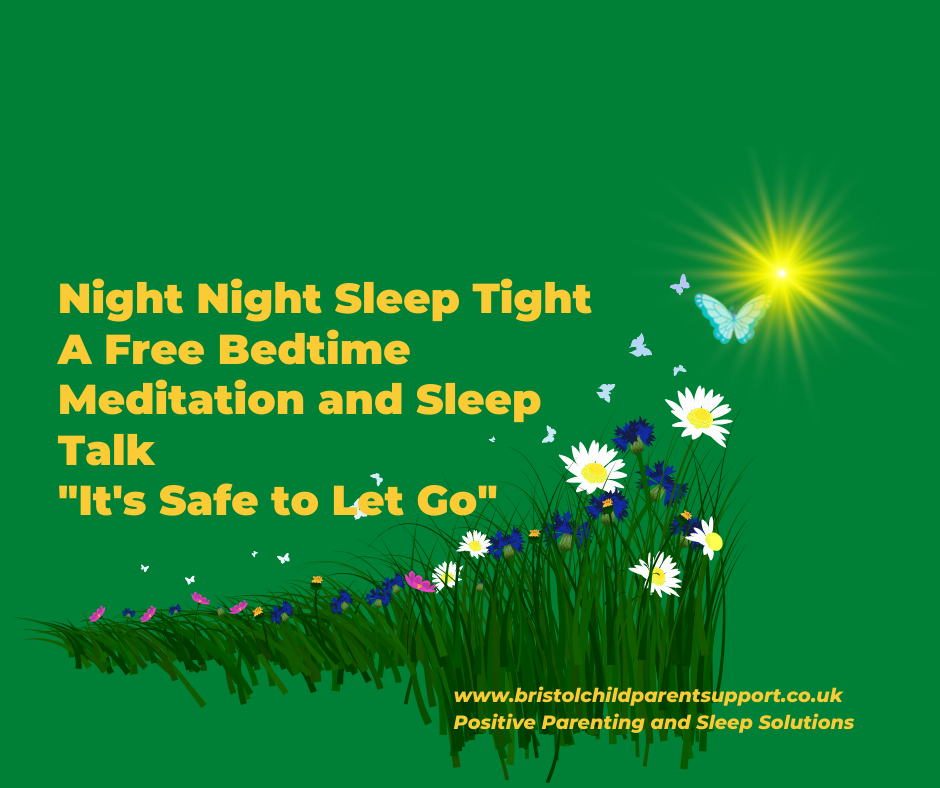As children and parents wind down for the night, the bedtime ritual provides a moment to reconnect. Children feel safe and loved when negative emotions are released and can “let go” into sleep. I wrote this meditation for all children, especially those who struggle to “let go” of worries at night. I have also included the free sleep talk I offered in Lockdown. May it bring conscious connection, a mindful journey and a deep night’s sleep for your child.
What age group is this meditation for?
All children, including those with learning difficulties, can benefit from this meditation school-aged onwards, including those with learning difficulties. I would love to hear from you if you found it helped with your preschooler.
How do I use it?
You should complete your bedtime routine before retiring to sleep. It can be downloaded and played with your child when they are in bed and ready to fall asleep. A lot of bedtimes are rushed. Sometimes I just wanted to get through it quickly. However, this often resulted in an extended bedtime since I was absent. It is critical to teach our children the importance of breathing and taking some time to breathe together.
The importance of teaching your children how to breathe
Often, children grow up without knowing how to deal with strong and intense emotions. Working in CAMHS, I recognise this can lead to catastrophic outcomes. You can teach your children how to breathe through strong feelings from a young age, so they will learn that they will pass. During bedtime, I explain how to breathe through the belly in the meditation below. Do it with them, and don’t be afraid to hold their hand; it will also benefit you. Connecting our mind with our body brings us peace and makes us feel at home in our hearts.
What is a good bedtime routine?
A bedtime routine should be consistent and straightforward, same time every night.
- Bath
- Bed
- Story ( a book or make-one-up)/meditation
- Cuddles
How long should it take?
The bedtime routine should take up to 40/45 mins maximum from downstairs to sleep! 10 -12 hours is a long time for children to be away from mummy and daddy, so they may stall if they are worried. In addition, ensure you or your child has no exposure to screens at least an hour before bedtime; the blue light from the screens will keep you all awake. Download the f.lux app for your computer too. It’s free. Your screen will turn more amber when the sun goes down. You won’t have to think about it.
My child can’t Stop Thinking at Night.
Children often find it difficult to quieten their thoughts at night and need to hear them more than once. Children who suffer from nighttime fears, separation anxiety, and daytime anxiety may need a more intensive treatment than just meditation.
Here are more of my blogs and the free sleep workshop I offered in Lockdown:
Does My child have Separation Anxiety
How to Manage Negative Thinking Patterns
9 Ways to Manage the Worry Monster
In Conclusion
There can be many reasons why your child is having trouble sleeping, but I hope this will help you and your family. Join my newsletter community for a second meditation next month for National Sleep Day in March; sign up here, NEWSLETTER.
Remember: parenting is hard work, and you all deserve support. And when it all starts to feel impossible, ask for help. If you need help and support, contact me for a sleep/ consultation or do join my newsletter community. With Gratitude Catherine
If you enjoyed this blog post and found it helpful or inspiring, please share it with your friends on social media by clicking on the icons on the side. Thank you for visiting my website!
Disclaimer
All content provided by Bristol Child Parent Support is intended for entertainment purposes only. Always check with your doctor in the first instance. Please do not use any of this material while driving or when it is unsafe to relax and fall asleep.



